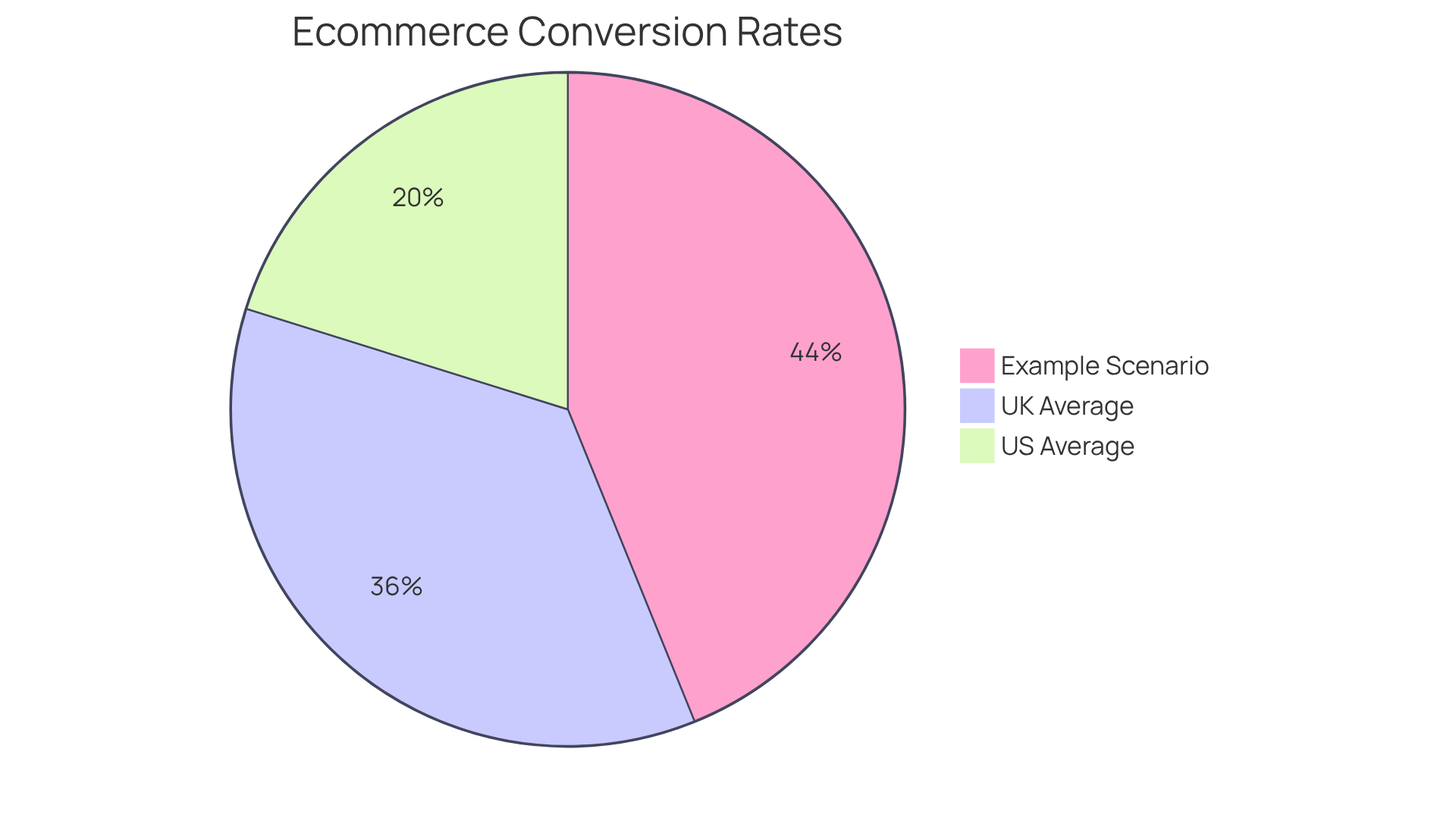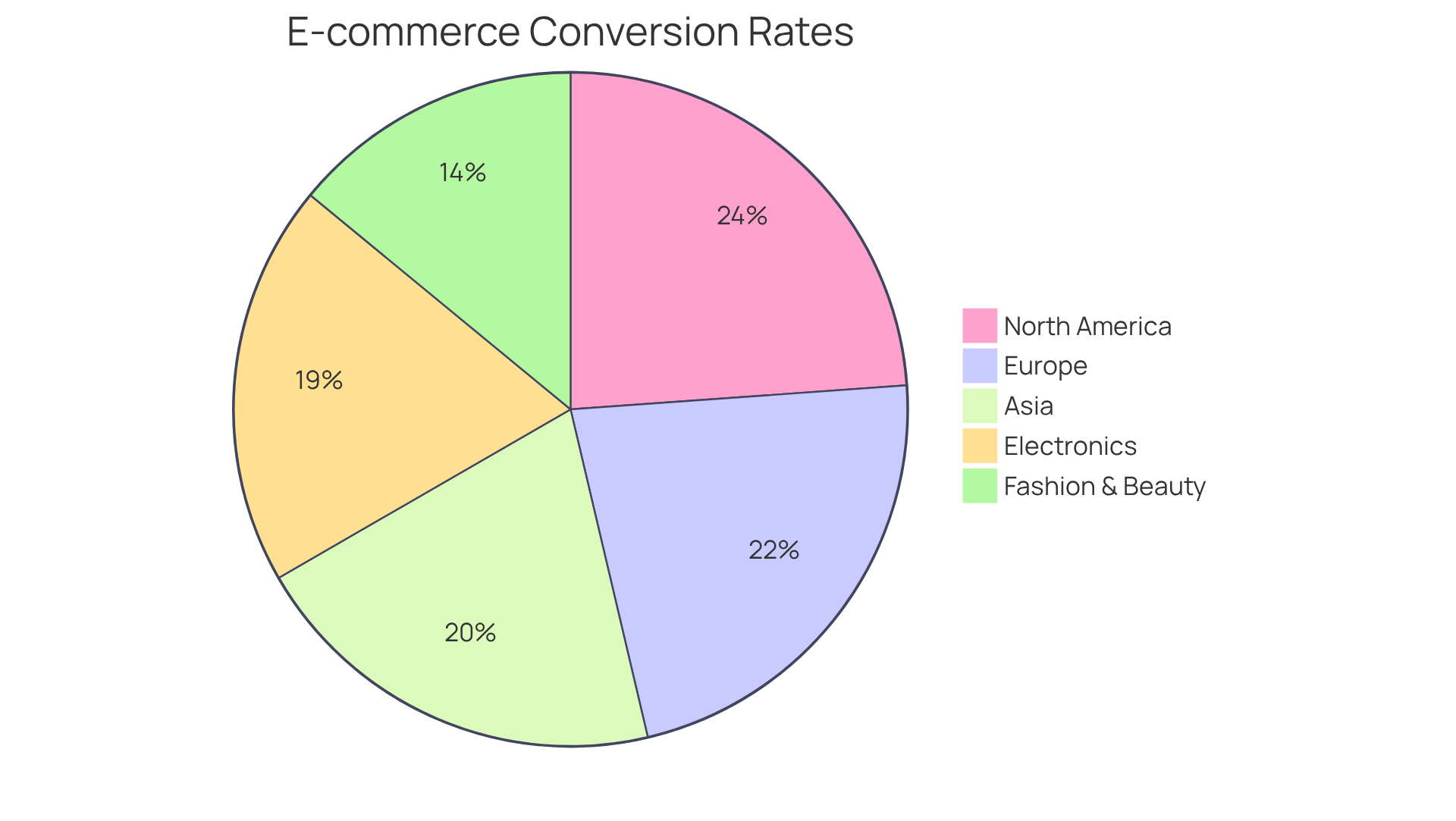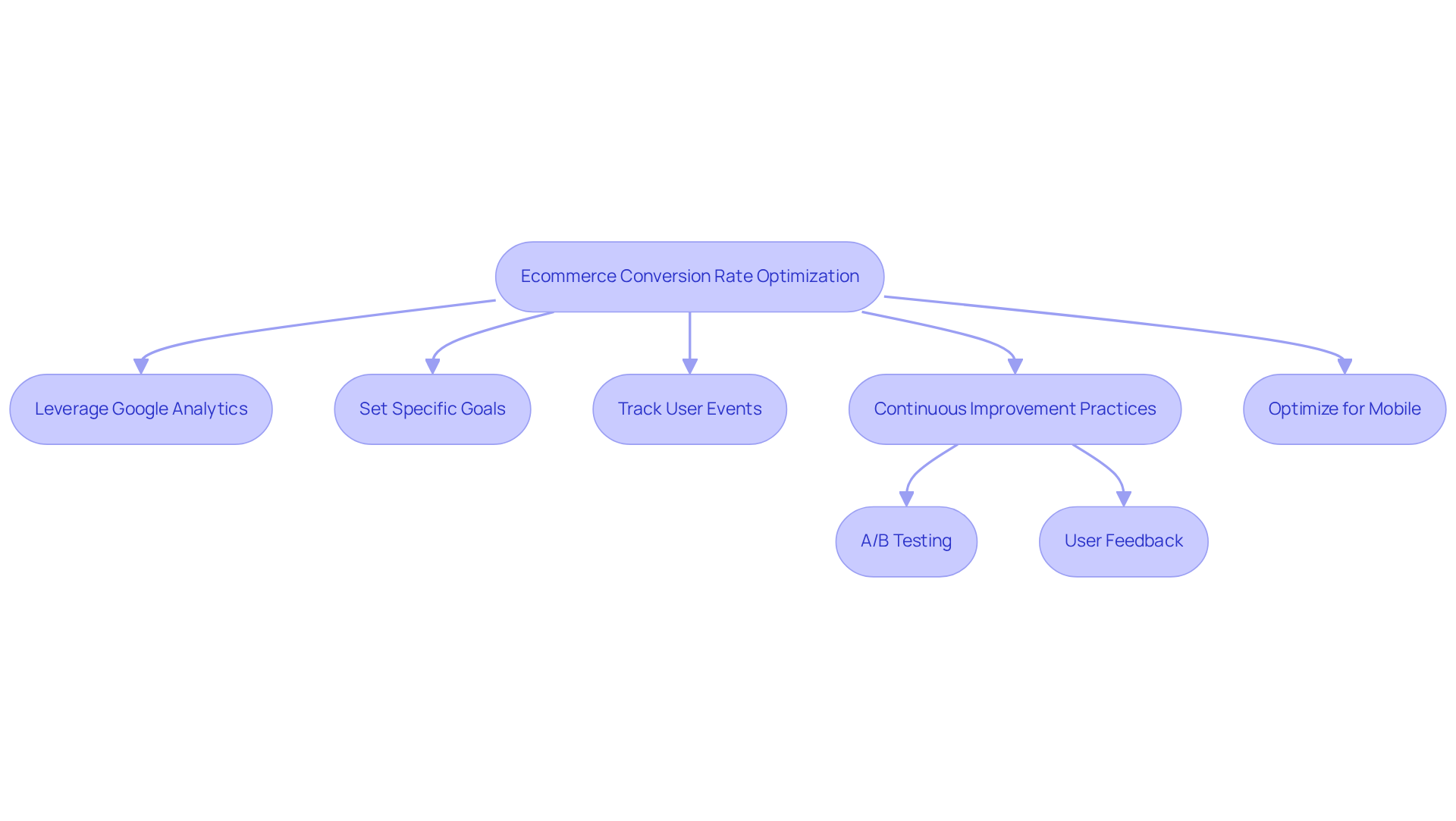
Overview
The article asserts that understanding and optimizing ecommerce conversion rates is crucial for significantly enhancing direct-to-consumer (DTC) profits. By closely monitoring these rates and implementing effective strategies tailored to user experience and aligned with industry benchmarks, businesses can markedly improve their sales performance and profitability—without the need to increase traffic.
Introduction
Understanding the nuances of ecommerce conversion rates is essential for any direct-to-consumer (DTC) brand striving to maximize profitability. With the average conversion rate in the U.S. hovering around 2.3% and varying significantly across industries and regions, a rich opportunity exists for brands to enhance their performance. The challenge, however, is clear: how can businesses not only meet but exceed these benchmarks to drive sales? This article explores the critical importance of conversion rates, the various factors influencing them, and effective strategies to optimize these metrics, ultimately leading to improved revenue and sustained growth.
Define Ecommerce Conversion Rate and Its Importance
An signifies the percentage of website visitors who achieve a desired action, such as making a purchase. This metric is calculated by dividing the number of sales by the total count of visitors and then multiplying by 100. For instance, if your site attracts 1,000 visitors and 50 complete a purchase, your percentage of successful transactions stands at 5%.
This metric is crucial as it directly influences ; a higher success percentage results in increased sales without the need for additional traffic, establishing it as a . By understanding and monitoring this metric, companies can pinpoint areas for improvement and adapt their marketing strategies accordingly.
Notably, leading ecommerce brands can achieve , underscoring the substantial revenue potential available through effective optimization techniques. , as a specialist CRO agency, focuses on sustainable growth and profitability, ensuring that your optimization efforts not only enhance success metrics but also .
Our approach features customized strategies that align with your unique business needs, emphasizing the to boost overall revenue by minimizing friction and enhancing user experience.
For context, the average in the US is approximately 2.3%, while in the UK, the . These benchmarks serve as valuable references for DTC brands to assess their performance and uncover opportunities for enhancement.

Explore Average Ecommerce Conversion Rate Benchmarks by Industry and Region
In 2025, the reveal notable disparities across various sectors and regions. The overall change in percentage across all sectors hovers around 2.5% to 3%.
For example:
- Fashion and beauty companies typically experience success percentages ranging from 1.5% to 2.5%.
- Electronics often report figures between 2% and 3.5%.
Regionally:
- North America stands out with , averaging approximately 3.4%.
- Europe is at around 3.2%.
- Asia is about 2.9%.
These benchmarks are aiming to assess their performance against competitors and identify areas for enhancement.
Leveraging tools such as Google Analytics can yield valuable insights into how your , facilitating .

Analyze Factors Affecting Ecommerce Conversion Rates and Optimization Strategies
hinge on several critical elements, including the , website layout, , , and . A cluttered or poorly designed website can deter potential buyers, whereas a streamlined, user-friendly interface significantly enhances the shopping experience. The effective application of visual hierarchy directs users' focus to vital elements, such as calls to action, thereby enhancing engagement and increasing the likelihood of achieving desired outcomes.
To build trust and encourage purchases, it is imperative to provide clear product descriptions, high-quality images, and . Research indicates that 'add to cart' action—averaging an 11% rate in the U.S.—are essential for boosting sales.
Successful optimization strategies encompass:
- various layouts to identify the most effective design elements.
- Enhancing page loading times, as even a one-second delay can reduce sales by 7%.
- Utilizing retargeting ads to re-engage visitors who did not convert initially.
- Implementing mobile-first indexing to ensure a seamless experience across devices.
- Maintaining consistency in to create a smooth user experience.
- Focusing on micro-conversions, which are essential steps leading to the final purchase.
Case studies from illustrate that companies prioritizing user-focused design and ongoing testing can achieve significant improvements in success metrics and overall profitability. For example, a $30M clothing label experienced a 35% increase in conversion rates after enhancing their homepage and applying techniques such as gamifying the progress bar for free shipping limits. Likewise, a $15M cleaning product label improved their average order value (AOV) by 80% through strategic pricing and bundling. By prioritizing these strategies, ecommerce companies can foster a more engaging and trustworthy shopping environment, which can significantly enhance their ecommerce conversion rate average and ultimately boost their bottom line.

Implement Effective Measurement Techniques and Continuous Improvement Practices
To effectively assess the and other success metrics, companies must leverage tools like Google Analytics, which deliver critical insights into user behavior and pathways to success. The projected global ecommerce transaction percentage for 2025 ranges from 2% to 4%, providing a benchmark for DTC brands to evaluate their performance.
By establishing specific goals and meticulously tracking events, businesses can identify where users abandon their purchasing journey. , including regular A/B testing and gathering , are essential for adapting to changing consumer preferences and behaviors to enhance the .
advocates for a holistic approach to , focusing on maximizing profitability through comprehensive strategies that align paid ads with landing pages. For instance, a case study examining elements affecting success levels reveals that (approximately 4%) compared to paid advertisements (2%-3%).
By employing , companies can implement transformative, data-informed strategies that enhance success and profitability. Analyzing data and making incremental adjustments empower companies to refine their strategies, leading to ongoing improvements in .
Moreover, and integrating user-generated content can significantly boost the ecommerce conversion rate average. Regularly reviewing performance metrics ensures that brands remain agile and responsive to market trends, ultimately driving profitability.

Conclusion
Understanding and mastering ecommerce conversion rates is not merely beneficial; it is essential for driving profitability in direct-to-consumer (DTC) businesses. By honing in on this critical metric, companies can uncover opportunities for improvement, optimize their marketing strategies, and ultimately enhance their bottom line. Conversion rates serve as a key performance indicator, and even incremental improvements can yield substantial financial gains.
In this discussion, we explored various aspects influencing ecommerce conversion rates, including:
- industry benchmarks
- user experience
- effective optimization strategies
Insights into average conversion rates across different sectors and regions underscore the necessity for brands to evaluate their performance against these standards. Specific tactics, such as:
- A/B testing
- enhancing website design
- leveraging analytics tools
can significantly impact conversion rates and overall sales performance.
The importance of continuously monitoring and optimizing ecommerce conversion rates cannot be overstated. Brands must remain agile, adapting their strategies to meet evolving consumer preferences and market dynamics. By implementing effective measurement techniques and committing to ongoing improvement practices, DTC companies can not only boost their conversion rates but also secure long-term profitability in an increasingly competitive landscape. Embracing these insights and strategies will pave the way for sustainable growth and success in the ecommerce arena.
Frequently Asked Questions
What is the ecommerce conversion rate?
The ecommerce conversion rate is the percentage of website visitors who complete a desired action, such as making a purchase. It is calculated by dividing the number of sales by the total number of visitors and multiplying by 100.
How is the ecommerce conversion rate calculated?
The conversion rate is calculated by taking the number of sales, dividing it by the total number of visitors, and then multiplying the result by 100. For example, if a site has 1,000 visitors and 50 make a purchase, the conversion rate is 5%.
Why is the ecommerce conversion rate important?
The ecommerce conversion rate is important because it directly influences revenue generation. A higher conversion rate leads to increased sales without needing additional traffic, making it a key performance indicator for ecommerce success.
What is the average ecommerce conversion rate in the US and UK?
The average ecommerce conversion rate in the US is approximately 2.3%, while in the UK, it is around 4.1%. These benchmarks help DTC brands assess their performance and identify areas for improvement.
What can companies do to improve their ecommerce conversion rates?
Companies can improve their ecommerce conversion rates by understanding and monitoring their conversion metrics, pinpointing areas for improvement, and adapting their marketing strategies. Optimizing micro-conversions and enhancing user experience can also help boost overall revenue.
What is Parah Group's focus in terms of ecommerce conversion optimization?
Parah Group, as a specialist CRO agency, focuses on sustainable growth and profitability. They emphasize customized strategies that align with unique business needs, aiming to enhance success metrics while reducing customer acquisition costs.
FAQs











